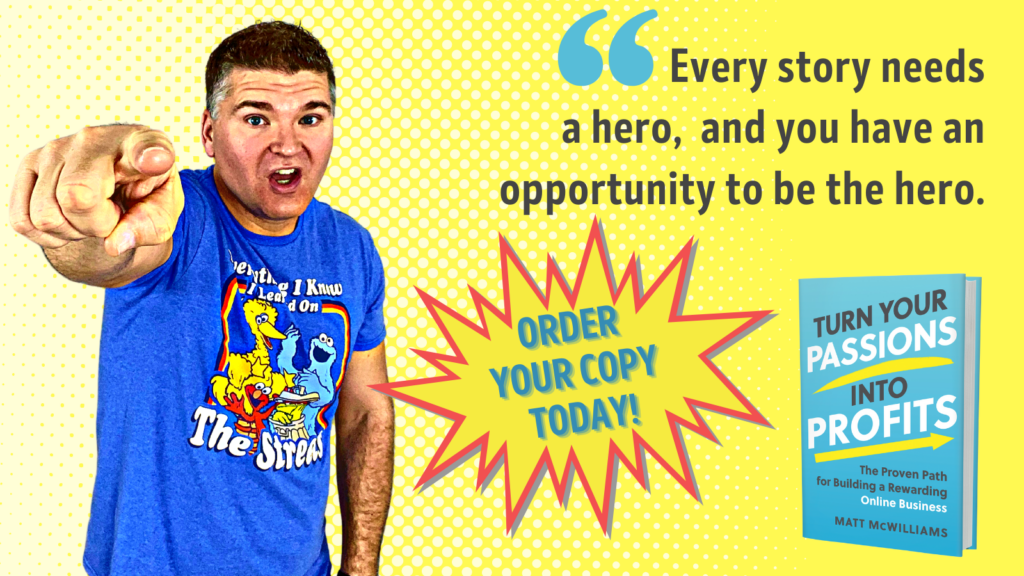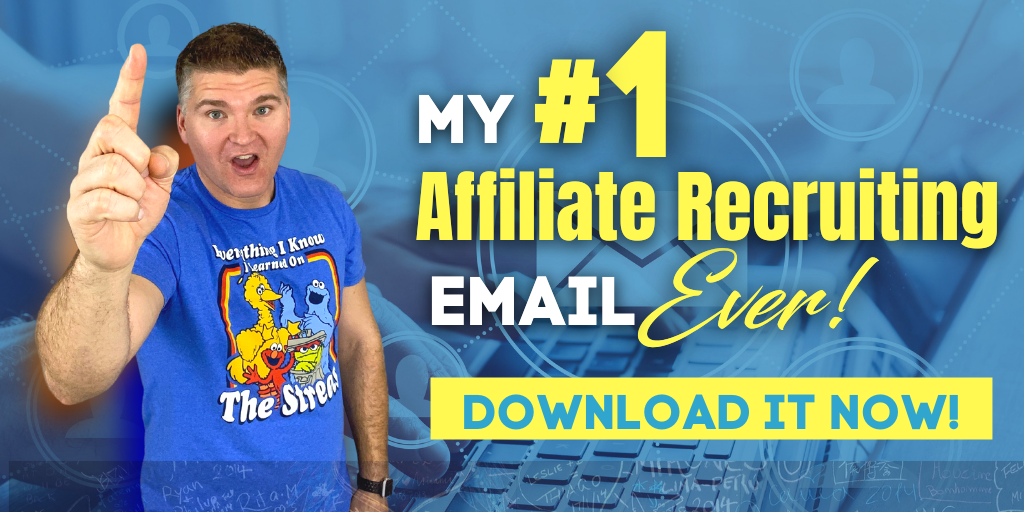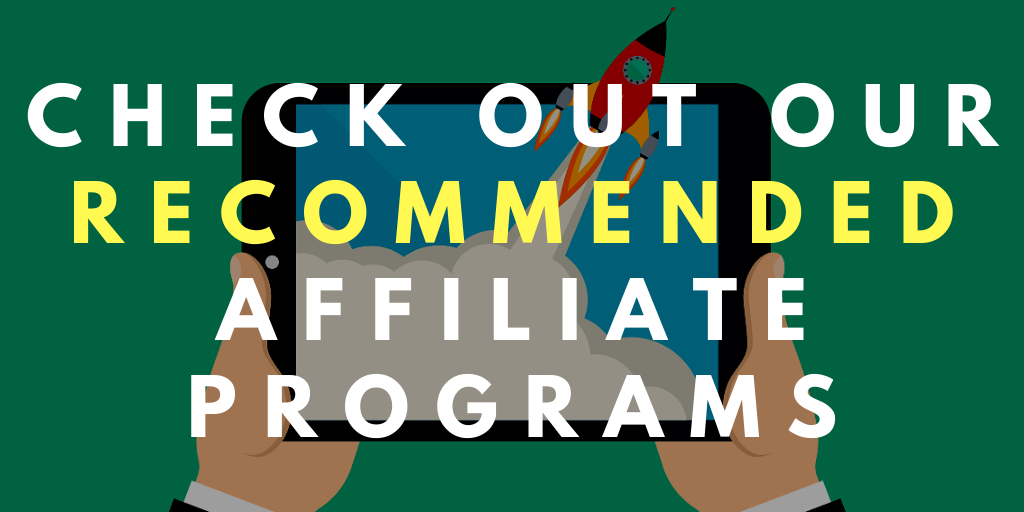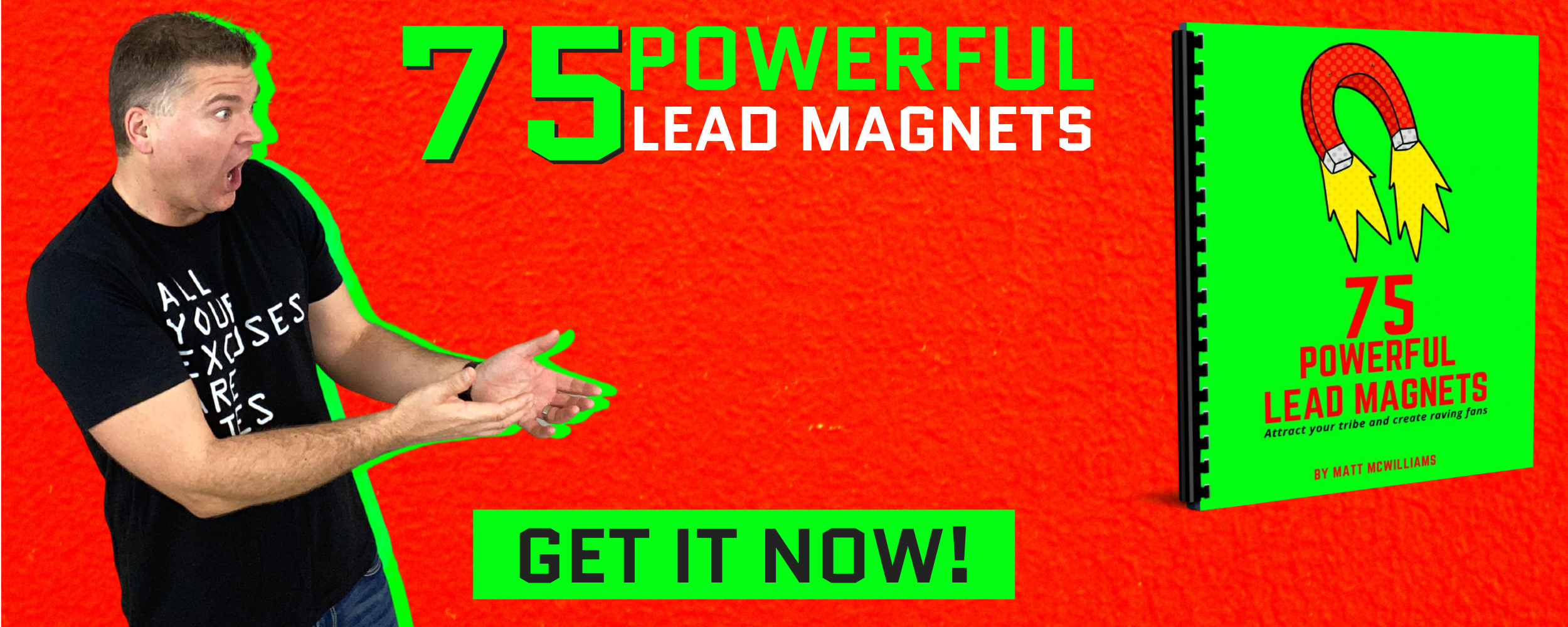Well, we did it! Earlier this year, we officially launched a bestselling book. It wasn’t easy, but we not only beat our original sales goals, but we made a huge splash in the industry. We’re now nationwide in stores and the book continues to sell like crazy more than two months later. So…how did we do it? Today, I share my top 10 lessons from launching a bestseller. Some are painful, some nearly cost us big time, but I’m sharing them all with you today!
Click Here for The Written Transcript of This Episode
LINKS MENTIONED IN THIS EPISODE
Get Turn Your Passions Into Profits & $500+ in Bonuses
Check Barnes & Noble for Availability
Text me at 260-217-4619
Don’t Miss An Episode – Subscribe Below
Previous Episodes of The Affiliate Guy
Listener Q&A: Finding Affiliates, What’s Working in Affiliate Recruiting, Email Templates, and More
How to Create Recurring Affiliate Revenue Promoting Membership Sites
Behind-the-Scenes on Our Affiliate Promotion for Product Launch Formula
How to Promote Virtual Summits as an Affiliate (If You Aren’t a Speaker)
Fix Your Funnel: How to Increase Sales and Make Your Affiliates More Money with John Ainsworth
10 Lessons I Learned Launching a Bestselling Book
Well, we did it. Earlier this year, we officially launched a best-selling book.
That wasn’t easy, but not only did we beat our original sales goals, but we made a huge splash in the industry.
We’re now nationwide in stores, and the book continues to sell like crazy more than two months later.
So how did we do it?
Well, today I share my top ten lessons from launching a best-selling book.
Some are painful and some nearly cost us big time. But I’m sharing them all with you today.
So I shared a little bit of the results from our book launch a few episodes ago. I just talked about how the launch was amazing.
Despite making some huge mistakes and I’ll talk about those, we still end up with a bestseller.
We did it like, it’s the coolest thing in the world. We still are in stores nationwide.
We’re in Barnes and Noble, which is amazing, and almost all Barnes & Noble nationwide. We’re sold out in some that I noticed.
And then they like so on Tuesdays they have the book, or Wednesdays they have the book, and then Friday they’re sold out, and then they have it again the next week or two weeks later, and then they’re sold out again.
But for the most part, we’re in Barnes and Noble nationwide, and if you want to check out where it is, you go to Passionsintopitsbook.com/Barnes, and you can see where it’s available and if it’s available in your store, just real quick, if it’s in stores, go buy a copy.
And when you go buy a copy in stores and send a receipt to Support@mattmcwilliams.com, we are going to give you access to our Legacy Vault.
It is over $1,100 in special training and courses and other materials.
It’s one of the craziest things I’ve ever done, but that’s how much I care about the bookselling in stores.
Get my #1 affiliate recruiting email (the one I’ve personally used to recruit thousands of affiliates in dozens of niches). Grab your copy here!
Because if we sell right now, like, even as this is coming out, it’s only been in stores for a couple of months.
If we continue to sell at this rate, then they’re going to continue to pick up the book, and we’re going to have a long-term presence in stores and that’s ultimately what we care about with that.
So willing to do some crazy things to incentivize you to go buy the book in stores. So go to Passionsintopitsbook.com/Barnes, and then go check if it’s available.
If it’s not available in the store, go to the store and order it in the store for pickup or delivery.
Got to do it in stores and then send the receipt to us at Support@mammograms.com, and we will give you access to that Legacy Vault.
So again, we’re able to do that because it’s in stores in the first place and it’s in stores in the first place because of what we did to launch it, which is what we’re talking about today.
Some other cool things that have come out of it offered a two-book deal by a major publisher for the next two.
And I’m not saying we’re going to take it, we’re going to give that some time and see what happens but that’s pretty stinking cool.
The next one, we got offered a big two-book deal.
And I was doing an interview earlier today with Ray Edwards, and one of the things that we were talking, he asked me, what’s something that you learned from this whole experience?
And that’s what kind of led to me doing this episode. I shared one thing with him, and I’ll share what that was here in a second.
But I actually have ten more lessons to share with you, actually. Well, as always, I have a bonus lesson. I’ll just go ahead and tell you that.
So really I have twelve lessons, and I’m going to start off with the thing that I shared with Ray, and that is that the book opened doors I could not have imagined.
I’ve been publishing online for more than a decade. I have three very successful programs and very successful courses.
This is episode 530, something of my podcast. We have all these training and webinars and products and all that stuff. Nothing has made the impact that the book has made.
It has opened doors I could hardly even imagine in terms of exposure to podcasts and other interviews and platforms that I never could get in with all the other stuff we had.
There’s something magical about a book. It’s magical. It’s almost what I was telling Ray is like, the experience we had.
Here I am. I’ve worked with you years ago, and my wife asked me, who are your dream clients?
And I told her about Michael Hyatt, Tony Robbins, Jeff Walker, and Eric Thomas. But I’m never going to work with any of those people.
I’m never going to get to work with my dream clients. I have worked with three of those four clients.
I’ve worked with Jeff Walker, I’ve worked with Tony Robbins, and I have worked with Michael Hyatt but here’s the thing.
My daughter, my eleven-year-old daughter never got that excited about any of those clients.
When I do webinars, she doesn’t go around telling people that her daddy did a webinar.
When I told her we’re working with Tony Robbins and Jeff Walker, she was like, okay.
But when my publisher shipped me my author copies of my book and I went to the back porch, she was in the backyard playing, and I held it up.
She ran. She ran to me and grabbed the book, and she went, she went I was like, what are you doing?
She’s like, a new book smell. She stuck her face in it and smelled it, and she was so excited, that she took it to soccer.
And when people would ask her what she was reading, she would tell them, my daddy wrote a book and she sold some books because her daddy wrote a book.
She doesn’t my daddy has a webinar.
Looking for some good affiliate programs to promote? Check out our recommended affiliate programs here!
She never says, My daddy has a podcast.
No.
My daddy works with Tony Robbins and Michael Hyatt.
No.
My daddy has a court.
No.
Doesn’t care about any of that stuff.
And I was like, Why is that?
What is it about us?
And I realized that, as I told Ray earlier, I think there’s something in our epigenetics at this point. If, you know, epigenetics understand that our DNA evolves over time, we change.
And I think it has become such a part of our DNA that it’s almost a spiritual thing books are because as a two-month-old, our parents read to us.
They don’t put us on a webinar. We don’t listen to podcasts, but they read to us. There’s a spiritual connection to books.
And I believe that over the course of the last few hundred years, it’s become a part of our DNA. Books were being read 500 years ago. The Founding Fathers read books.
The early presidents read books. Abraham Lincoln read books. All these leaders read books and so we are today, too and so all this other stuff is new.
So there’s that spiritual connection to books, and they’re magical and because of that, they opened doors I couldn’t have imagined.
There were interviews I got that I could never have gotten if I didn’t have a book. There were clients that we got.
That was the weirdest thing. I didn’t write the book for them, but it opened us up to them. Been pretty amazing what it’s done.
So that was lesson number one thing that I learned. It’s kind of like a pre-bonus lesson, because now that’s just, “Hey, write a book. You should do it.”
But here are some lessons I actually learned from the launching of the book.
Number one, it is so much harder than I thought.
Does that mean it’s not worth it?
No.
But I’m going to tell you right now, I had run multiple book launches before, and I’d done just the affiliate side.
We’d sold more than 330,000 books. We’d launched over ten bestsellers, and done all these amazing things.
But that’s all I did, was the affiliate side. Not only did we do the affiliate side, I know it was a little bit involved with them for the most part.
Our affiliate management team handled that. Big shout out to Jason and Jennifer because they did an amazing job. They killed it. They crushed it.
Even Jim on our team and Robby on our team were handling so much. Even Kate on our team was helping.
And Kevin, my assistant with Syed, I mean, like, the whole team was in on it. Jim Folsom was doing graphics, and Gerry was writing copy.
And I didn’t have to do all that stuff, but I did have to do almost 150 interviews, and I did have to lead the whole book launch as a whole and so it was a lot harder than I thought it would be. Totally worth it, though, but a lot harder.
The second lesson. Well, this is one that kind of sucks.
This is probably the most, almost the biggest screw-up I’ve ever made in my professional life.
So our goal became to hit the bestseller list as I shared it before. That wasn’t my original goal, but it became the goal a little bit over a year and a half ago, and we were right on pace to do it.
And then I found out a week before launch that only the hardcover book sales count toward the bestseller list.
The audiobook doesn’t. And I went, what? Nobody told me that. And they all said the same thing.
We didn’t think to tell you because you’ve done this so many times and I went, you know what? There’s a reason.
When I was handling just the affiliate side every time, we only offered the hardcover. Never occurred to me that there was a reason for that.
Well, there’s a reason for that. That’s all it counts.
So we almost missed becoming a bestseller because we were allowing people to buy the audiobook and other versions, and we were like, yeah, those count.
Well, they didn’t. Not for our goal of hitting the best-seller list. So we still barely hit it.
But we could have been not only a lot higher, but also taken off a lot of the stress that we ended up having because of that giant mistake.
So there’s a lesson for you. Hardcover only, if you want to hit the best-seller list.
Lesson number three.
Amazon’s bestseller is really, really easy. It is really easy because of their algorithms.
Now, I don’t think anybody knows the exact algorithms, but basically, to hit the best seller list on amazon, it’s all about the number of books in a very short period of time.
That’s essentially what it is and so here’s kind of a general understanding of what I know about it.
If I’ve sold 100 books in the last two weeks and you’ve sold 60, but in the last 6 hours, you’ve sold 30 and I’ve sold two, you’re going to be ahead of me.
Now, if I’ve sold 100, you sell 60, and then in the last 6 hours, I’ve sold 20 and you’ve sold 23, I might still be ahead of you.
That compressed period of time is what matters and we didn’t know this.
In my free report, 75 Powerful Lead Magnets, I show you exactly what types of lead magnets actually convert and lead to explosive list growth. Grab your copy here!
I wasn’t gunning for Amazon bestseller, but we would have these spikes where we were like number one in the business category for half a day or a day and it’s really easy.
You just do sell not a ton of books. Like, you’d be number one in your category, like a small category.
We were number one in the small business category for something like nine weeks. We were number one in some other category.
That’s like a very niche category. We were number one there for six or seven weeks because you only got to sell like four books every 6 hours to stay there.
It was pretty easy but to be number one in a bigger category, you just need a bunch of books in a very short period of time.
Now it’s virtually meaningless if you know how easy it is, but it is nice. So if you’re new and you want to be an Amazon bestseller, do that.
Just get all of your buyers to buy on the same day, preferably in the same window of the day.
So maybe from noon to five, we’re going to get all of our buyers from noon to five. I don’t know the exact window.
So you may want to look that up. But all of our buyers are in a very compressed period of time and you can be a best seller.
It helps if you have some books sold before that, but then you want to have the majority of your books sold in a pretty compressed period of time.
Lesson number four.
You know what, affiliates are really, really the way to do this. That’s what drove over 90% of our sales affiliates as I shared before.
The whole thing was about the funnel and making it attractive to affiliates and that’s what drove over 90% of our sales.
So I’m doing a training coming up. I’m doing a training that’s going to be amazing if you go to MattMcwilliams.com/10kbooks so mammicwilliams.com So 10,000 books, right?
I’m doing a webinar called how to sell 10,000 Copies of Your books without major media or paid advertising and it’s all about how to run it for affiliates.
I’m going to walk you through step by step how to do it. It’s too late. When you go there, you can watch the replay.
So if you’re listening to this, like, way off in the future, there’s going to be a replay for that, but this is the way to run a book launch.
This is not only the future of book launches, it’s the present, but it’s also the past.
This is exactly how we did it for Lewis House, exactly how we did it for Jeff Goins, exactly how we did it for Brian Tracy and others that we’ve launched Bestsellers.
We did it with affiliates and so I’m telling you, come to this training because I’m going to walk you through exactly how to do it.
Even if you don’t know anybody. I’m going to show you how to find these affiliates.
The overwhelming majority of the affiliates that we had for this promotion were people that I didn’t know before we started this book launch.
I would show up to some of the interviews or people I knew. Kevin Miller and Dan Miller, Chandler Bolt with self-publishing school. Jeffrey Shaw, Ray Edwards. There’s a handful, probably 20 or 30.
These are people that I knew in advance that I had an existing relationship with. I shared a bunch of those in a couple of previous episodes.
But the overwhelming majority, well over 120 of them, I showed up meeting the person for the first time. I had no clue who they were.
I’m like, this is the first time I’m seeing them. So we found those people.
And again, it goes back to the bonus lesson I shared at the beginning, kind of that first bonus lesson.
These were people that I wouldn’t have otherwise been able to get on their show if it wasn’t for the book.
So I walk you through this training that we’re doing. So check out the URL in the show notes and make sure you come to that training.
I think I might blow your mind. We’ll see.
All right, lesson number five.
You need to have a document with all of your notes, all of your notes from the book. This is one of those behind-the-scenes things that I’m almost kind of ashamed to admit.
I did make one good move, a smart move early on, as I told my team, “Hey, I really want to start scheduling these podcasts late September to mid-October for a book launch in January, but I want to schedule them specifically with really small podcasts early on so I can work through the material.”
What are the talking points? We’ll talk more about talking points in a moment, but what are the stories that I find myself telling over and over, what are some of the things, like, I wrote the book, but a long time ago when we finished the manuscript, I don’t remember everything in the book.
So when somebody’s like, well, in step seven, you say this panic? What is that?
And I did that. It was like, the second interview. I know.
The first interview, I did the very first one. She’s like, “I love the SCALE acronym that you share in step nine” and I’m going, Oh…I forget.
I’m like, shift your mindset, capitalize on your small things like that. All in engagement.
What is the L? I can’t remember the L. Oh my gosh, I can’t remember.
So I had to look it up on the fly. Oh yeah, look for the gaps. And I had to look it up on the fly.
And I’m panicking because I’m trying to really slow down like I’m taking longer to explain the S and the C and the A.
So I spent like a minute each on the scene there and then I was like, look for the gaps.
And then I take 20 seconds to describe that one because I had to find it.
And so here’s the thing:
I made a document, just a Google doc, but on the left side are each of the chapters and the title of the chapter, and then the main points.
So for instance, I’ll just use step seven as an example here I’m pulling it up.
Step Seven, create Raving fans.
I’ve got the definition of creating a Raving fan there, so I don’t forget the actual quote of the definition for the book Raving Fans.
Then I’ve got three headers, three subheaders, next-level Avatar, ten Ways to Create Raving Fans, and the seven roles.
So that as I’m talking, I’ve got kind of like a crutch there.
Do I remember the seven roles 99% of the time? Yep.
So you got Master Maestro, the Hesitant Hero, the Jolly Journeyman, and so on and so forth.
But do I always remember the examples? No.
Gandalf and Lord of the Rings or Yoda and Star Wars for the master maestro for the Cordial caregiver’s mary Poppins and Obi-Wan Kenobi here’s the deal, I don’t remember right now because I’m not looking at it.
I don’t remember the Venerable Visionary, I remember Steve Jobs, but I can’t remember who the other one is.
I list two in each. But there’s one that I list three revolutionary rebels.
Three? Ferris Bueller, Katniss Everdeen from Hunger Games, and I think Indiana Jones.
I don’t remember the second venerable visionary. It has its in-hero.
I remember Frodo from Lord of the Rings, but I don’t remember who the other one is.
Like, not right now and it’ll come to me, and no, not Gandalf. Shoot..!
Willy Wonka is the other venerable visionary, but I still can’t remember who the other jolly journeyman is or no, the Hesitant Hero.
And so this is my point. I have this doc that has all of these things so I can pull it up and there it is. Spiderman is the other hesitant hero.
I remember most of the stuff from the book clearly, but this helps keep me on track.
So I have all my important notes, any acronyms where I might forget the thing, where there are multiple steps within a step and sometimes there are 13 steps.
I forget one. And so it’s got it in there. Any important quotes that I might not have memorized.
There are some quotes in the book that I have memorized in part because I have shared them so often. Never compare your beginning to someone else’s. End by John Acuff, Stephen Furdick the reason we struggle with insecurity is that we compare our behind-the-scenes to everyone else’s highlight reel.
I remember those. But there are other things in there that I forget. The quote from Steven Pressfield it says “Fear is an indicator.” I don’t remember the rest of that quote. I forget it.
So I’m able to go to the document. See here? I know it’s. Embrace your fears. There we are.
“Fear is an indicator. Fear tells us what we have to do. The more scared we are of a worker calling, the more we can be sure that we have to do it.”
It’s right there. So I’ve got these notes that make it much easier to do these interviews.
So that’s a big one. Do that beforehand. Go through the book. I took about 4 hours to create those notes. One of the best things I did.
Number six, this is something that my publisher made me do and it was a really challenging exercise, but I’m glad we did it.
Create Your Media Talking Points and Sample Questions so we have a document that has all of my talking points and sample questions.
And there are 22 sample questions and there are five talking points. It says here I’m just going to read some of it to an engaging conversation.
Matt McWilliams reveals how to take your passion, your ideas, your unique story, and your message and build a profitable business around them.
He can also speak to and it says, the importance of creating a business that you are both passionate about and makes a profit and it goes on to describe that.
Does the world really need another messenger, teacher, or thought leader? and it explains why, yes.
How to determine what passion and audience make the Right Business describes that.
How to lead Your audience just talks more about that and how to stand out in a crowded and noisy marketplace of ideas.
So these are five talking points that are attractive to potential media and then it’s got the sample questions.
Now the reality is, over half the questions I was asked had nothing to do with any of these sample questions.
Some of the best conversations I did strayed so far off these sample questions, and it was great, but they were still there if somebody needed some.
Lesson number seven let people do what they are good at. Now, this was a reminder for me. I do really good at this.
Like, I’m pretty good at this in practice. But I was reminded of this. I helped a little bit with the funnel.
I outlined it with my team, and then I let them take it from there. I let my affiliate management team do the affiliate management.
I didn’t step in too much. I really didn’t. I probably was involved in 3% of it, and that’s about it.
I let them take the other 97% so I could do the things that only I can do. I’m the only one that can do the interviews. I’m the only one that can.
That was really it. I was like the only thing. I was the only one who could do the interviews. Everything else, anybody on my team could do and that was the beauty of it.
I remember with Kevin Anderson, my agent, he kept coming to me and saying, with the book proposal, “Matt, what do you think about this idea? Can we do this?”
And I said, Kevin, for the 30th time, “Do whatever you want to my book proposal. You are the expert. I don’t care what you do.”
You can’t mess with my manuscript without my permission. We had multiple editors, and I took most of their advice. But sometimes I’d say no, you’re wrong.
This has to stay in but with a book proposal, I don’t care. The book proposal is never going to be in stores. Who cares?
Put a pink elephant on the cover I don’t care what you do to the book proposal. Go get me my dream publisher and he did. So let people do what they are good at.
With the graphics, I had an idea kind of, of what I’d like quotes from the book on the graphics, and I’d like my picture on there and sometimes the book.
And I was like, I kind of want there to be like a graphic where there’s the person who endorsed the book with their quote.
You do the rest. You go make the graphic. I don’t need to do that and my team did it.
And so let people do what they’re good at and get the heck out of their way. That’s just a reminder for all of you micromanagers out there and I’m not one of them.
For the most part. I probably need to do a little bit more of it, but get the heck out of the way.
Lesson number eight, just how important the pre-selling and the teasing is.
I did so much warm-up on the sales of this book. I mean, I think back to when I started writing the book over two years before it was published.
I started selling the book in a very subtle way. I didn’t do it for this reason, but it worked every day. I posted my word count to Facebook.
So I posted it, and I would post, like, kind of what I did that I finished chapter two or I’m halfway through step five, whatever, and I would post my word count how many I wrote that day and how many total were written.
And for months I did that while I wrote the book and every time somebody would say, I can’t wait till this book comes out.
I can’t wait till this book comes out with cover we invited my audience and my friends and all other sorts of people to help me pick the cover And I remember the whole process.
I think we had, like, eight original cover designs. I ruled out three. I just didn’t like them. Then we had the other five, and we went to about 50 people.
I think I just all I did with that was going to Facebook and I was just trying to rule out, like, one or two and get some comments on them.
Not necessarily rate them, but, like, comments, like, I like this part of this, but this part of this and maybe, what if you did this? And then we did another round.
I think we had five then, and they were variations, and I think there’s like, two new ones and we did that.
And that time we did, we went to, like, maybe about 200 people, including more people in my audience.
I think we went to only the people who’d been in my audience for a long time or something, and I think people like tech subscribers, so we didn’t go big on that one.
And then we got some ideas, and it was like, well, let’s combine these two and we ended up in four rounds.
In the fourth round, we went to everybody. We had three covers, and it was helped me pick this cover.
And actually we started with four, and we removed one after, like, half a day because it just had barely any votes.
And so we had four covers. We went to the audience, and this time we went to everybody.
So everybody was getting a teaser and they were involved in the process.
Not only did we tease it and that was awesome, but we ended up with a great design.
My mom said this when she went into the store in Wilmington, North Carolina, Barnes and Noble.
And it was right up front, just like it was in Fayetteville and a bunch of other Barnes and Nobles.
It was right up front, and she said it stood out because it was the only one.
I’ve got a picture from Fayetteville, North Carolina when we went there, and it is the only cover.
It’s right up front under it says new. Let me pull it up here. It says new nonfiction. New nonfiction.
I look at it like there’s a book called The Bezos Blueprint that’s a similar-ish color, but that’s it. It’s the only one.
There’s like multiple yellow books, some white, some black, some people pictures on the cover There’s kind of like an off-yellow, a couple of orange ones.
Another one that’s got a sky in the background that’s sort of a similar color. A couple of green ones.
A random walk down Wall Street, but it’s the end. It’s like a sore thumb, almost in a good way.
So we ended up with this great design, but this teasing early on, again, over a year in advance, I can easily say over 1000 of the sales were made a year in advance.
So pre-sell and tease like crazy. Talk about your journey. When you get an endorsement, share it. Oh, so excited to get this endorsement today.
Again, I was getting endorsements a year and a half out. It started to tease it just a little bit here and there.
All right, lesson number nine.
Well, kind of what I just said. They really do take a year or more to prep for. Okay?
You cannot launch a book in four months, five months, or even six months. It takes a year.
Plus you got to line up the media, interviews, and all these things. There was so much like, you need to start doing the interviews.
I started doing them not soon enough, and I started doing them three and a half months out.
It was exhausting because we crammed them into those three and a half months. If I had to do it all over again, I would have started five months out.
Not only could I have nailed down the talking points a little bit sooner, but instead of doing five interviews a day for three months, I could have done three interviews, or four interviews a day for five months.
I could have had days off. I had no days off from interviews for so long.
And it did I’ll be honest, it put a strain on other parts of my business, I should say businesses because in the process of this, we actually purchased another business.
I’ll talk more about that soon. But it put a strain on that. It put a strain on my health a little bit. I haven’t certain non-negotiables.
I will work out for at least 45 minutes a day, and usually, I like to do longer. Well, it was always 45 minutes.
I was working out like 45 minutes in 1 second because that’s all the time I had and so it did.
It put a strain on some stuff. It was a sacrifice. It was worth it to be able to have the impact and whatnot, but it takes a long time.
So you want to start doing the research on the media, in the podcast, interviews, and all the stuff we talk about in the training, we show you exactly how to do this.
The training that I talked about earlier, mattmcwilliams.com/10kbooks, and we’ll show you how to get affiliates.
All this stuff needs to happen more than a year in advance. It will come up on you quick.
We were planning this a year and a half to two years out, and I still wish I’d had more time.
Now, all that said, lesson number ten, you can do it.
Let me be clear. You can do it. Anyone can. Anyone can do this.
Do you need a huge team?
No.
Does it help to have extra people?
Absolutely.
Can you do it 100% by yourself?
Probably not. But you can write and you can launch a book.
So again, come to the training and we’ll talk about the launching side and the marketing side and how to leverage affiliates for that, because you don’t need to have a massive audience.
Are you going to get a huge advance if you don’t have a massive audience?
Probably not.
Are you going to get any advance at all?
Maybe not.
But if you have a message like I said earlier, there’s something magical, spiritual in our DNA about books.
And I’m not here to convince you necessarily to write a book. I’m just saying if you feel like you should, then do it Anik Singal asked me, and he’s like, should everyone write a book? And I said no.
But statistically, New York Times said a couple of years ago, 88% of the population says they want to write a book.
Only 1% do, or less than 1% do. If you’re in that 88%, yes. Stop talking about it. Do it.
I talked about it for so long and then I finally did, and I’m seeing the impact that it’s having.
I mean, I think I shared it a few episodes ago, but I got this text let me pull it up here.
I got this text from Tabitha Powers, said, “Hello, just got your book Turn Your Passions Into Profits.
Yesterday I read the first chapter, and (I’m sorry if I shared this before. I just can’t remember.)
I created my Avatar and then became unsure whether I could help them or not.
I wasn’t sure whether I was qualified, but I read chapter two.” I that not going to lie.
I cried. It gives me hope, it really does. I’ll be back at the end of the book to tell you all how this goes.
Well, she went on to write some other stuff, like, that’s what I was going for.
That’s the impact that a book can have. And you can do it, really. Anyone can.
So I encourage you to do it. If you’ve got it in, you do it.
All right, so quick bonus lesson here’s:
One we probably should have finished on that one, but I’m going to share this quick bonus lesson here real quick.
Don’t wait until launch week to set up Amazon ads. They didn’t work. No one knows why.
Amazon is still two months later trying to figure out why I can’t run Amazon ads now.
The reason we wait did was they’re not profitable for preorders. Too many people like odds.
I’m not going to preorder a book. If we had set them up four to six months in advance, kind of going back to what I said takes a year, and we just spent $5.
Like, if we just run a preorder campaign for $5, even three or four months in advance, then I would have known if there was a problem, and then we could have just kept an ad going for $5 a day.
Oh, what if we only sell one a week? And actually, that’s a waste of money because it’s sold for $28.
I only get a small chunk of that from the publisher. But the ads would have been running.
So then when we hit law tweak, first of all, we would have had at least some data.
Like, could we have split, and tested some ads? You say, wow, five whole dollars a week for what, 20 weeks?
That’s been $100. That’s not a big deal and we sell 30 books or something. Ridiculously low. Maybe not even that, whatever the number is.
We had some data on some split tests, and a little bit of data on maybe what language works. Just small early data, months in advance, and what if this had happened and it took them three months to figure it out?
Again, we’re two months, and they still haven’t figured it out. What if it took them three months to figure it out?
Then we would only be able to run them for three months. Or really, what if you took them for four or five months?
Well, at least we would have been able to run them on launch week when I really needed to run them.
And it cost us so many sales, and we almost missed the best-seller list because of that. So don’t wait until launch week to run Amazon ads.
So I think I ended up sharing twelve lessons today. Hopefully, you got a lot out of those. It’s been an amazing experience for those of you who are longtime listeners and you’re like, “Okay, Matt, stop talking about the book.”
First of all, I’m not going to stop talking about the book. I’m probably going to mention a few things from it over the next year or so.
But this will probably be the last one I do where I really dive deep into Turn Your Passions Into Profits.
If you want to check out the book passionsintoprofitsbook.com, if they sell books, they sell my books. You can order on Amazon, Barnes, and Noble, or wherever, but we’re running that special.
If you go into stores in Barnes and Noble and grab a copy there or order a copy there if they don’t actually have it on hand, you can look that up at Passionsinterprofitsbook.Com/barnes and then send your receipt.
Take a picture of the receipt, send it to support@mattmcwilliams.com and we’re going to give you that legacy vault with over 1000 hundred dollars worth of amazing stuff.
I would love to hear from you. What’s your biggest takeaway? Maybe it’s that I’m going to write a book. Well, text me at 260-217-4619. I would love to hear from you.
All the links we mentioned, how to get the book, how to get it at Barnes and Noble, the training I’m doing on how to run a book launch, all of those links are in the show notes as always, and make sure you hit subscribe so you don’t miss the next episode.
We’re doing another affiliate profile and I’m going to share with you how entrepreneurs on fire, that’s right, John Lee Dumas and Kate Erickson how used a challenge to promote a massive affiliate offer.
It’s a really cool story and you don’t want to miss it. So make sure you hit subscribe so you don’t miss that episode.
I’ll see you then.
Questions?
Text me anytime at (260) 217-4619.
Or…check out some of my free reports to help you get on the right track:
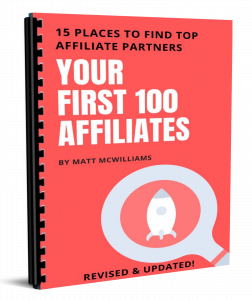 |
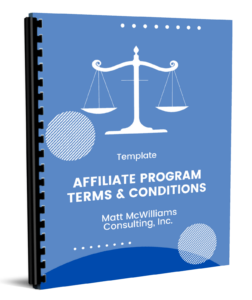 |
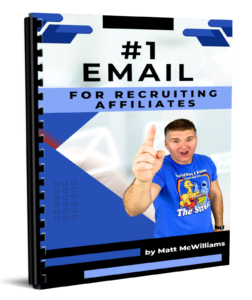 |
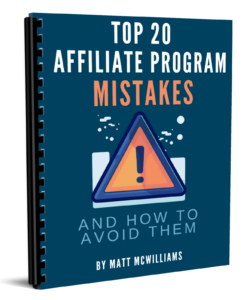 |
 |
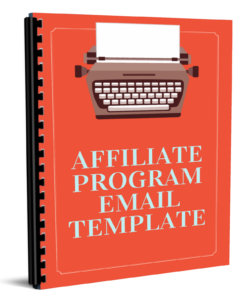 |
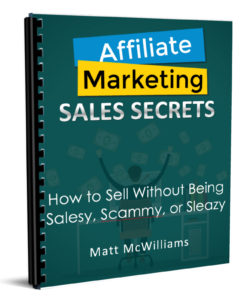 |
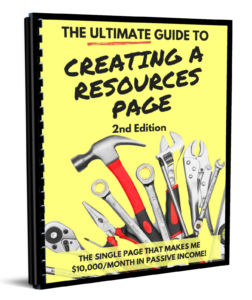 |
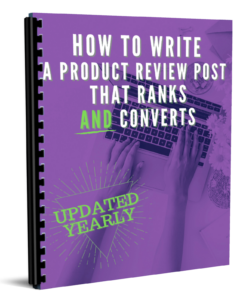 |
